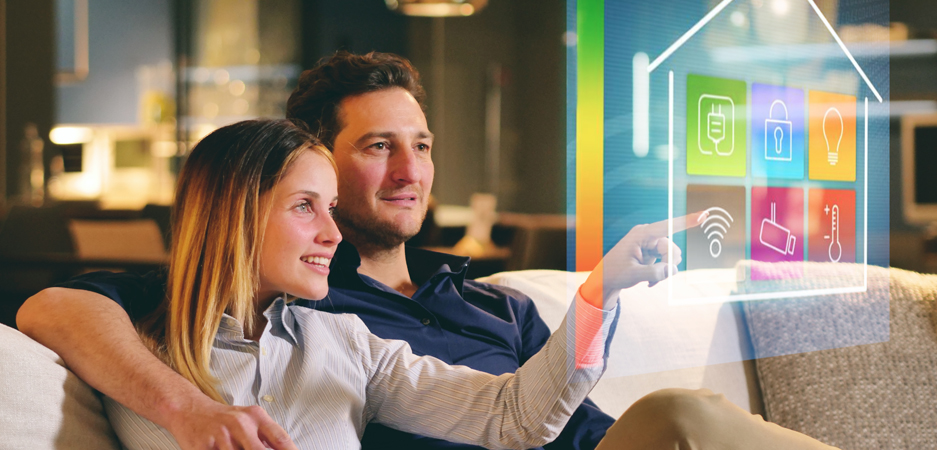Turn Any Home Into A Smart Home — Here’s How
Recent advances in consumer technology have allowed homeowners to reimagine how they interact with their homes. Today, bringing any house into the future and making it a certifiable “smart home” is easier than ever as almost anything can be automated, whether it’s controlling a TV, doing laundry, dimming the lights, locking the doors or keeping your home cool. In this article we will look at a couple of new gadgets, appliances and accessories that will have you rethinking how you live, connect and control your life at home.
Automate With an Assistant
From hubs and switches to speakers, displays and appliances, the level of control and connectivity in US homes is changing rapidly. Today there are over 40 million homes equipped with at least one of these devices in the United States, with that number expected to climb to over 67 million by 2024.
For those considering a jump into the smart home world, you may be wondering where to start. Central to almost all smart home setups is an “assistant.” The three most common platforms — and a good starting point for most people — are Amazon’s Alexa, Google Assistant, and the Apple HomeKit.
Each of these allows communication with a variety of devices and accessories to automate a host of functions in the home. The key here is to find the platform that works best for you and make sure that as you continue adding accessories in the future, they are compatible.
Speakers First
The most common smart home devices on the market today are speakers, because they are the principal way to communicate with your assistant. Beyond communicating with your smart home assistant, however, they also allow you to bring music into your home.
While most homeowners will invest in an initial hub speaker like the Amazon Echo, Google Home Max or Apple HomePod, additional speakers can be added in other rooms of the house and connected to make sure you have access to music and your assistant wherever you are in the home.
Plug It In, Make It Smart
Some people worry that the jump into a smart home will require them to replace all of their current appliances and electricals with their smarter cousins. Smart plugs, however, allow you to affordably upgrade many things you already own and incorporate them into your smart home network.
Smart plugs are accessed through your home assistant or accompanying apps when you are away, and there are a million ways to use them: remotely controlling lights and appliances, limiting screen time for kids, starting a slow cooker from work to have dinner ready when you get home or any other use you can think of.
Better yet, using smart plugs can allow you to save energy by scheduling appliances and electronics to shut off when not in use. Limiting the amount of standby power used by household items like computers, printers, TVs, phone chargers and kitchen appliances is not only good for your wallet but good for the environment.
Staying Safe
Another benefit of a smart home is that it can help keep your home and family safe. Well-known security companies like Ring, SimpliSafe and ADT have a host of cameras, doorbells, lights and other accessories that can work with your home assistant to add protection.
Beyond that, your smart home can also include connected smoke alarms, carbon monoxide and carbon dioxide detectors. That way instead of a basic local alarm, you can be alerted on your smartphone if a fire breaks out or a leak happens while you are away.

Keeping Comfortable
The main goal of a smart home is to make life easier, and technology today allows for complete control over your home to keep everyone comfortable. You can monitor the weather outside, as well as the temperature and humidity inside your home with tools like a Smart Home Environment System from AcuRite with Amazon Alexa to get detailed environmental information for your family. Best of all, you can pair that data with a smart thermostat like an Ecobee to ensure that everyone stays comfortable at home.
The best part is that you have control, even when you are away. Forgot to turn off the A/C before a two-week summer road trip? No problem. Left a bedroom window open and it’s 20 degrees outside in the winter? Get a notification on your phone and get home to close it.
Scratching the Surface
These are just some of the ways you can start converting your digs into a smart home. As you start the conversion you will realize there are infinite ways to connect and communicate with nearly everything in your home. Starting with these five areas will help you and your family stay connected, safe and comfortable.
References:
https://www.statista.com/outlook/280/109/control-and-connectivity/united-states#market-users
https://carbontrack.com.au/blog/5-awesome-things-can-smart-plug/
https://www.cnet.com/pictures/security-cameras-that-work-with-amazon-alexa/
https://www.acurite.com/environment-system-with-indoor-temperature-and-indoor-humidity-and-multi-sensor-display.html
https://www.acurite.com/blog/acurite-access-and-amazon-alexa.html
https://www.acurite.com/blog/hey-alexa-my-current-weather-is-simplified.html
https://www.cnet.com/reviews/ecobee3-lite-smart-thermostat-review/






